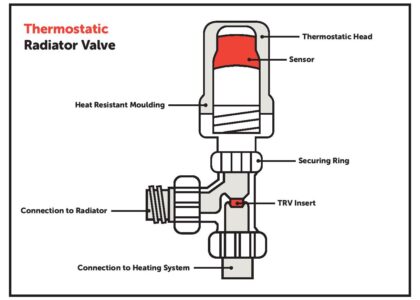The global smart home devices market is expected to grow at a compound annual growth rate (CAGR) of 17.8% throughout the forecast period. Valued at USD 58.4 billion in 2023, the market is projected to surge to approximately USD 300 billion by 2033.
The growing demand for smart home devices is primarily driven by the increasing need for energy-efficient and low-carbon-emission solutions, fueling the expansion of the global smart home devices industry. The swift adoption of cutting-edge technologies, including the Internet of Things (IoT), blockchain, smart speech recognition, and artificial intelligence (AI), is also playing a pivotal role in accelerating market growth.
Smart home technology allows devices to recognize users’ voices and respond with personalized replies. The growing adoption of IoT in both emerging and developed countries has fueled the expansion of the smart homes market. This technology’s ability to create seamless interconnectivity between devices has driven increased demand for smart home solutions. Innovations such as flush-mounted light controls, which transform traditional light switches into smart solutions that easily integrate with existing smart home systems, have further boosted the demand for smart home devices.
Existing light switches just need to be converted with the appropriate adapters and fitted by a professional, easing end users’ labor. The inhabitants of the house may then control the lights manually or by smartphone and tablet, as desired. These goods are projected to contribute to the increasing need for smart home appliances.
Climate change has increased demand for electrical cooling systems in the summer and natural gas, heating oil, wood, and electrical heating systems in the winter. IoT enhances the usefulness of automation systems. Many major, mid-sized, and small organizations throughout the world are investing heavily in IoT and IoT-enabled products. This is expected to have an influence on a wide range of applications, including lighting, HVAC, military, healthcare, and entertainment. Home technological developments are augmenting industry expansion. Manufacturers are constantly inventing and altering smart home gadgets to accommodate the simple lives of tech-savvy consumers. Furthermore, manufacturers have been creating smart automation and high-tech features for connected homes.
What strategies can smart home device companies use to expand their businesses?
- Innovation and Product Differentiation: Develop new and unique features that stand out in the market. This could include advanced voice recognition, improved security features, or integration with other smart devices.
- Focus on User Experience: Ensure that products are easy to use and seamlessly integrate with existing smart home systems. Enhancing user experience through intuitive interfaces and reliable performance can drive customer satisfaction and loyalty.
- Leverage Emerging Technologies: Invest in cutting-edge technologies such as AI, machine learning, and advanced IoT solutions to enhance the functionality and efficiency of smart home devices.
- Expand Product Range: Offer a diverse range of products to cater to various needs and preferences. This could include smart lighting, security systems, thermostats, and appliances.
- Strategic Partnerships and Collaborations: Partner with technology companies, home builders, and retailers to expand distribution channels and reach a broader audience.
- Focus on Energy Efficiency and Sustainability: Develop energy-efficient and environmentally friendly products, which are increasingly important to consumers and can help meet regulatory standards.
Regional Analysis for the smart home device Market
- North America: This region is expected to experience a strong CAGR, driven by high technology adoption rates, a large base of early adopters, and substantial investments in smart home technology. The growing emphasis on home automation and energy efficiency is also contributing to market growth.
- Europe: Europe is anticipated to see steady growth, supported by advancements in smart home technology and increasing consumer awareness about energy conservation and home security. Regulatory support for energy-efficient solutions further boosts the market.
- Asia-Pacific: The Asia-Pacific region is projected to witness significant growth, with a high CAGR. Rapid urbanization, increasing disposable incomes, and rising demand for smart home solutions in countries like China and India are key factors driving this expansion.
- Latin America: The Latin American market is expected to grow at a moderate CAGR. Factors such as improving economic conditions, urban development, and increasing interest in smart home technologies are contributing to market growth.
- Middle East and Africa: This region is likely to experience a gradual increase in CAGR. Growing infrastructure projects, rising disposable incomes, and increasing awareness of smart home technologies are supporting the market’s development.
Competitive Landscape:
The smart home devices market is undergoing a transformative phase driven by technological advancements, offering substantial opportunities for major suppliers to meet growing customer demand with innovative product lines.
Who is winning?
Some of the key players present in the smart home device market are
- Samsung Electronics Co. Ltd.
- LG Electronics
- Siemens AG
- Honeywell International Inc.
- Schneider Electric
- Koninklijke Philips N. V
- Amazon.com Inc.
- Robert Bosch GmbH
- Apple Inc.
- Nest Labs
- UNITED TECHNOLOGIES
- Panasonic Corporation
- Sony Corporation
- Midea Group
- ORVIBO Inc.
Recent Developments:
- In August 2020, Honeywell Inc. partnered with Latch app to create more modern, full building experience. Honeywell thermostats give residents and property managers the ability to remotely control the temperature and oversee energy management.
- In Dec 2019, Schneider Electric launched Easy Homes which is IoT enabled. Easy homes empower customers to manage power in their homes through a single app. It converts homes into a smart home turning every switch and appliance into a connected device.
Smart Home Devices Market by Category
Product Type
- Security Lighting Control Smart Home Device
- Access Control Smart Home Device
- HVAC Control Smart Home Device
- Entertainment and Other Control Smart Home Device
- Kitchen & Home Appliances
- Healthcare Smart Devices
Price Range
- Below US$ 25 Smart Home Device
- US$ 25-35 Smart Home Device
- Above US$ 35 Smart Home Device
Sales Channel
- Direct Sales
- Mono Brands
- Supermarkets/Hypermarkets
- Department Stores
- Specialty Stores
- Online Retailers
- Other Sales Channel
Region
- North America
- Latin America
- Europe
- East Asia
- South Asia
- Oceania
- Middle East and Africa (MEA)
About Future Market Insights (FMI)
Future Market Insights, Inc. (ESOMAR certified, recipient of the Stevie Award, and a member of the Greater New York Chamber of Commerce) offers profound insights into the driving factors that are boosting demand in the market. FMI stands as the leading global provider of market intelligence, advisory services, consulting, and events for the Packaging, Food and Beverage, Consumer Technology, Healthcare, Industrial, and Chemicals markets. With a vast team of over 400 analysts worldwide, FMI provides global, regional, and local expertise on diverse domains and industry trends across more than 110 countries.
Contact FMI:
Future Market Insights Inc.
Christiana Corporate, 200 Continental Drive,
Suite 401, Newark, Delaware – 19713, USA
T: +1-845-579-5705
For Sales Enquiries: sales@futuremarketinsights.com
Website: https://www.futuremarketinsights.com
LinkedIn| Twitter| Blogs | YouTube






